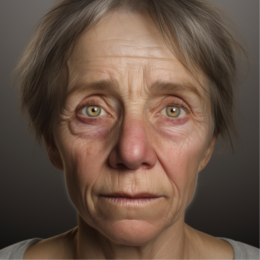What Are the Signs of a Stroke: Recognizing and Preventing a Medical Emergency

A stroke is a severe medical condition that happens when the blood supply to part of the brain is cut off, often due to a blockage or a rupture in the blood vessels.
Timely recognition of the signs and symptoms of a stroke can lead to quick medical intervention, significantly reducing the risk of long-term disability or death.
In this article, we will explore the signs of a stroke, including: what are the symptoms of a stroke and what is a mini-stroke, as well as tips on how to prevent stroke.
Statistics:
- Each year, strokes affect 13.7 million people worldwide, causing nearly 5.5 million deaths (WHO, 2022).
- Additionally, strokes are a leading cause of serious long-term disability, reducing mobility in more than half of stroke survivors aged 65 and over (CDC, 2023).
What Are the Signs of a Stroke in Men And Women
Strokes can affect both men and women. However, the signs of a stroke can vary somewhat between genders. In both men and women, the sudden onset of the following symptoms can indicate a stroke:
- Trouble speaking and understanding
- Paralysis or numbness of the face, arm, or leg
- Vision problems in one or both eyes
- Headache, usually severe and of abrupt onset
- Trouble walking
These signs can be remembered using the acronym FAST: Face drooping, Arm weakness, Speech difficulty, and Time to call 911.
Men often experience the “classic” stroke symptoms, such as facial drooping, arm weakness, and speech difficulties. In contrast, women might also experience these signs, but they are more likely to have unique symptoms such as sudden confusion, fainting, or severe headache. Recognizing these differences can lead to faster treatment and better outcomes.
Statistics:
- 55,000 more women than men have a stroke yearly (CDC, 2023).
- Studies suggest that people who recognize and respond to these symptoms by calling emergency services get to the hospital about 30 minutes faster than those who do not (NIH, 2023).
The Symptoms of a Stroke
Besides the primary signs, additional stroke symptoms might include dizziness or loss of balance, sudden severe headache with no known cause, confusion, or trouble understanding speech. These symptoms usually occur suddenly, and even if they seem to fluctuate or disappear, they should be taken very seriously.

What Is a Mini Stroke
A transient ischemic attack (TIA), often referred to as a mini-stroke, produces stroke-like symptoms but does not cause lasting damage. Although it doesn’t cause permanent disabilities, a mini-stroke can be a warning sign of a future stroke and is a medical emergency. The symptoms of a mini-stroke are the same as those of a regular stroke but tend to be temporary, lasting a few minutes to 24 hours.
Statistics:
- About 1 in 3 people who have a TIA will eventually have a stroke, with about half occurring within a year after the mini-stroke (American Stroke Association, 2023).
Prevention of a Stroke
While some risk factors for stroke cannot be controlled, like age and genetics, many others can be managed. Here’s how to prevent stroke:
- Lower blood pressure: High blood pressure is a significant risk factor for stroke, contributing to over half of all strokes (World Heart Federation, 2023).
- Lose weight: Obesity increases the risk factors for stroke, with the risk of stroke increasing by 22% for each BMI unit above 25 (The Lancet, 2023).
- Exercise more: Regular physical activity contributes to many health benefits, including stroke prevention, reducing stroke risk by 25% (Stroke Association, 2023).
- Limit alcohol: Heavy drinking increases stroke risk by nearly four times (CDC, 2023).
- Quit smoking: Nicotine raises blood pressure, and smoking can clot the blood — both significant risk factors for stroke. Smokers have twice the risk of stroke than non-smokers (American Heart Association, 2023).
Conclusion
In conclusion, understanding what are the signs of a stroke and what are the symptoms of a stroke can make a vital difference in treatment outcomes. Recognizing a mini-stroke is also critical, as it can serve as a warning for a possible future stroke. Prevention, including lifestyle changes, is the best way to reduce the risk of this severe medical condition.
References
- World Health Organization (2022). “Stroke, Cerebrovascular Accident.” Retrieved from: https://www.who.int/news-room/fact-sheets/detail/stroke-cerebrovascular-accident
- National Institute of Neurological Disorders and Stroke (2021). “Stroke Information Page.” Retrieved from: https://www.ninds.nih.gov/Disorders/All-Disorders/Stroke-Information-Page
- Centers for Disease Control and Prevention (2022). “Preventing Stroke: Healthy Living.” Retrieved from: https://www.cdc.gov/stroke/healthy_living.htm
- American Stroke Association (2023). “What is a TIA?” Retrieved from: https://www.stroke.org/en/about-stroke/types-of-stroke/tia-transient-ischemic-attack
- World Heart Federation (2023). “High Blood Pressure and Stroke.” Retrieved from: https://www.world-heart-federation.org/resources/high-blood-pressure-and-stroke/





